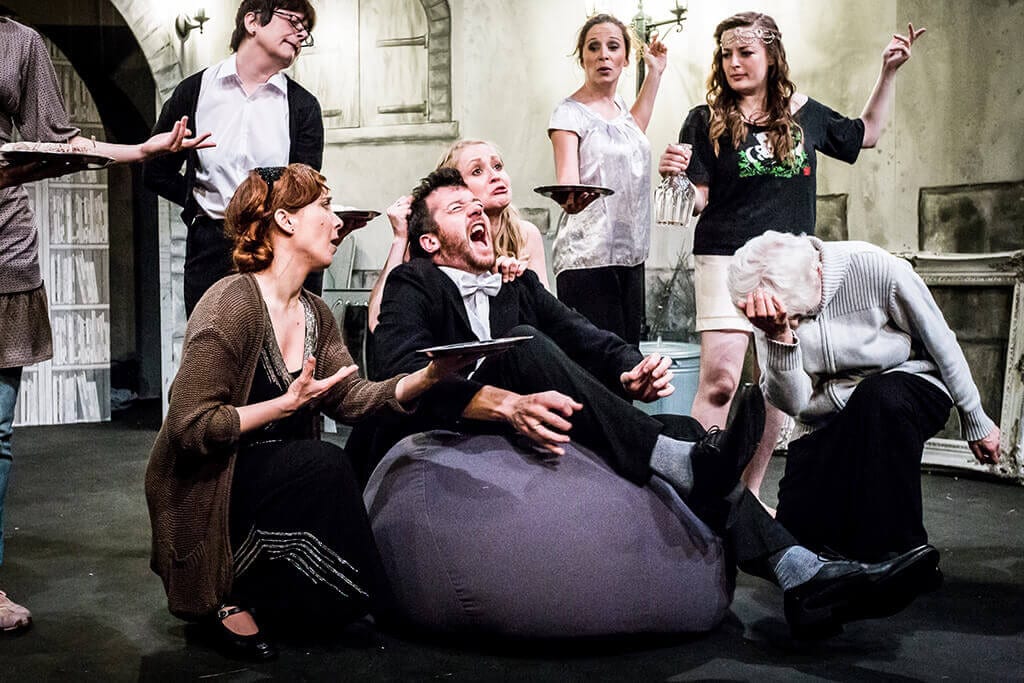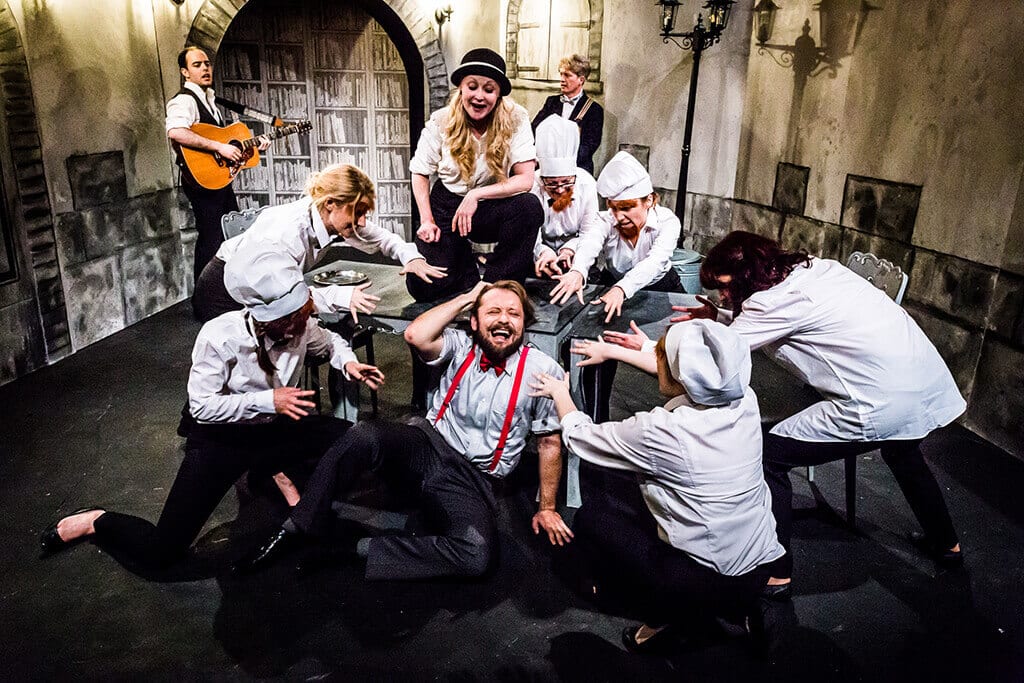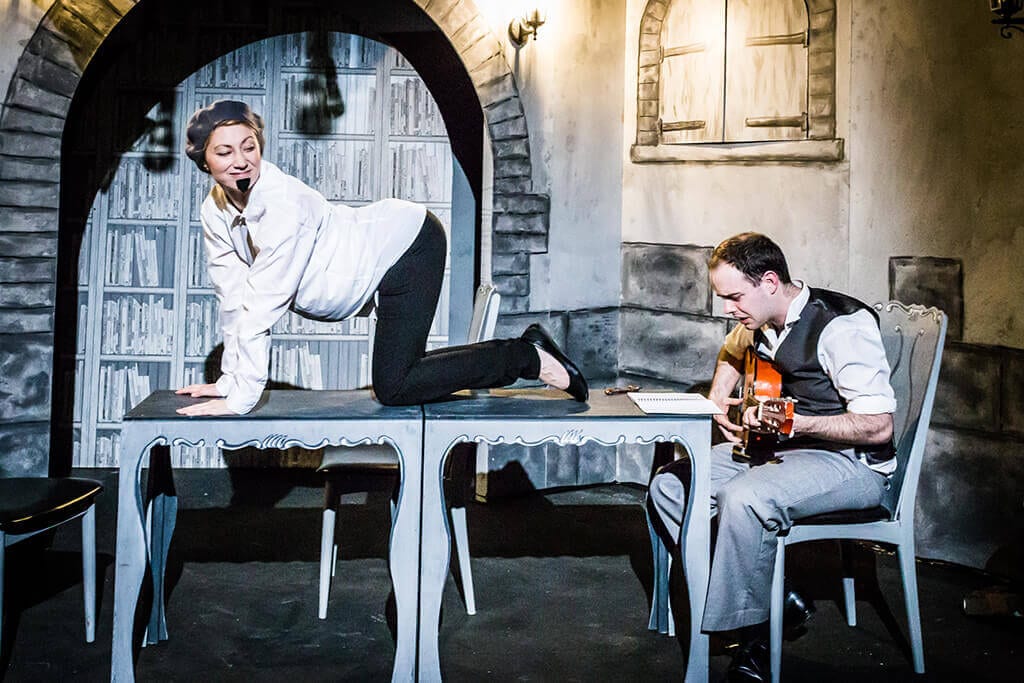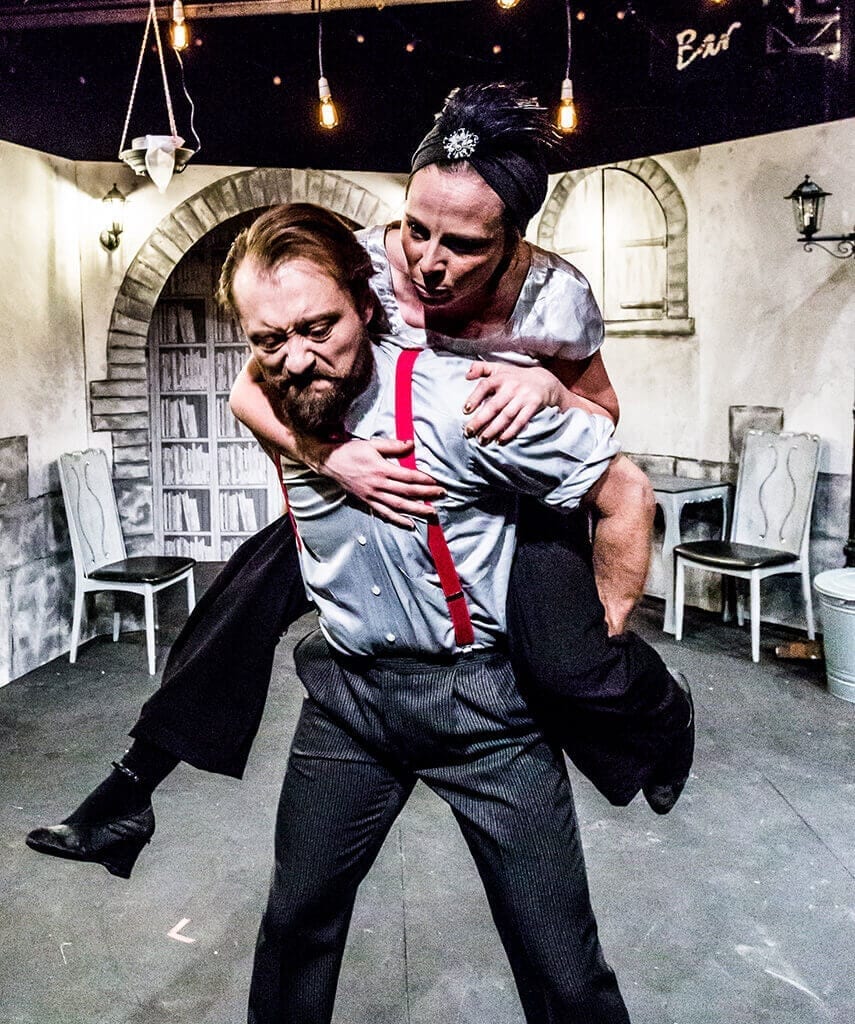The Taming of the Shrew is no stranger to adaptation – the 1960s film starring Richard Burton and Elizabeth Taylor has become a Hollywood classic, as has the modern reconstruction 10 Things I Hate About You. The New Wimbledon Studio have bravely presented an innovative, gender-swapped version of the play, cleverly demonstrating just how well Shakespeare’s universal themes stand up to reinvention and experimentation.
Shakespeare’s piece is a play within a play. This version begins with a group of actors, being driven out of their wits by the chaos incited by Christopher Sly, a member of their company. When he (helpfully) knocks himself out and wakes up delirious, they decide to perform a play to teach the troublesome knave his lesson. In the traditional version, two beautiful, wealthy young sisters live in Verona. The younger, Bianca, is beautiful, sweet tempered and charming; Katherine, the elder, is equally beautiful, yet wild to the point of being feral, and ferociously outspoken. Their father, desperate to marry them both off, finds Bianca awash with suitors, yet Katherine mysteriously lacking. Enter Petruchio, a nobleman from Verona in search of a rich woman, who vows to marry Katherine and tame her – the “shrew”. The body of the plot follows this story, whilst the sub plot involves Bianca, and her army of suitors in the shape of Gremio, Hortensio and Lucentio. However, the New Wimbledon Studio reverses the genders of the characters – Katherina becomes Kajetano, Petruchio becomes Petruchia, and so on. In an age where women’s rights, misogyny and where the boundaries lie are constantly being discussed in the national and international press, this seems even more relevant, showing how Shakespearean theatre can be recycled and re-used.
This approach was not without its faults. The traditional version pushes sexism to the point of farce, thus making The Taming of the Shrew more of a satire. At times, this production took itself too seriously. Without giving anything away, a moral transformation takes place for one of the male characters towards the end, which is perhaps too genuine for a play that seems, quite obviously, to be making fun of itself. This element of The Taming of the Shrew was lost – does director Ross McGregor somehow think that the idea of a submissive husband is less ridiculous than that of a submissive wife? However, perhaps this genuine, new-found male sensitivity was another contemporary comment on the importance of equality between the sexes. Indeed, the predominantly female cast did seem to reclaim the play, in a wonderfully feminist way.
The acting was uniformly fantastic. Elizabeth Appleby was deliciously commanding as Petruchia, and had wonderful chemistry with Alexander McMorran, who’s subtle shift from fearsome beast to gentle giant was portrayed with grace and humour. Another memorable turn was provided by Gemma Salter as the witty, East-End Trania. All the lines were delivered with wit and conviction, and the stylish, monochrome costumes did not distract from the action on stage (or differentiate between the genders whatsoever). The addition of contemporary music provided a welcome twist on the group of musicians who would have serenaded the audience in the Elizabethan era at the Globe. Though the lyrics were occasionally a little clumsy, the band was charming, and kept with the spirit of the production as a whole.
Though imperfect, this version of The Taming of the Shrew would have been loved by the legendary playwright himself. Rather than doing the original as it has been done before, the New Wimbledon Studio has made it new and relevant, holding a mirror up to our times just as Shakespeare’s plays are supposed to do.




